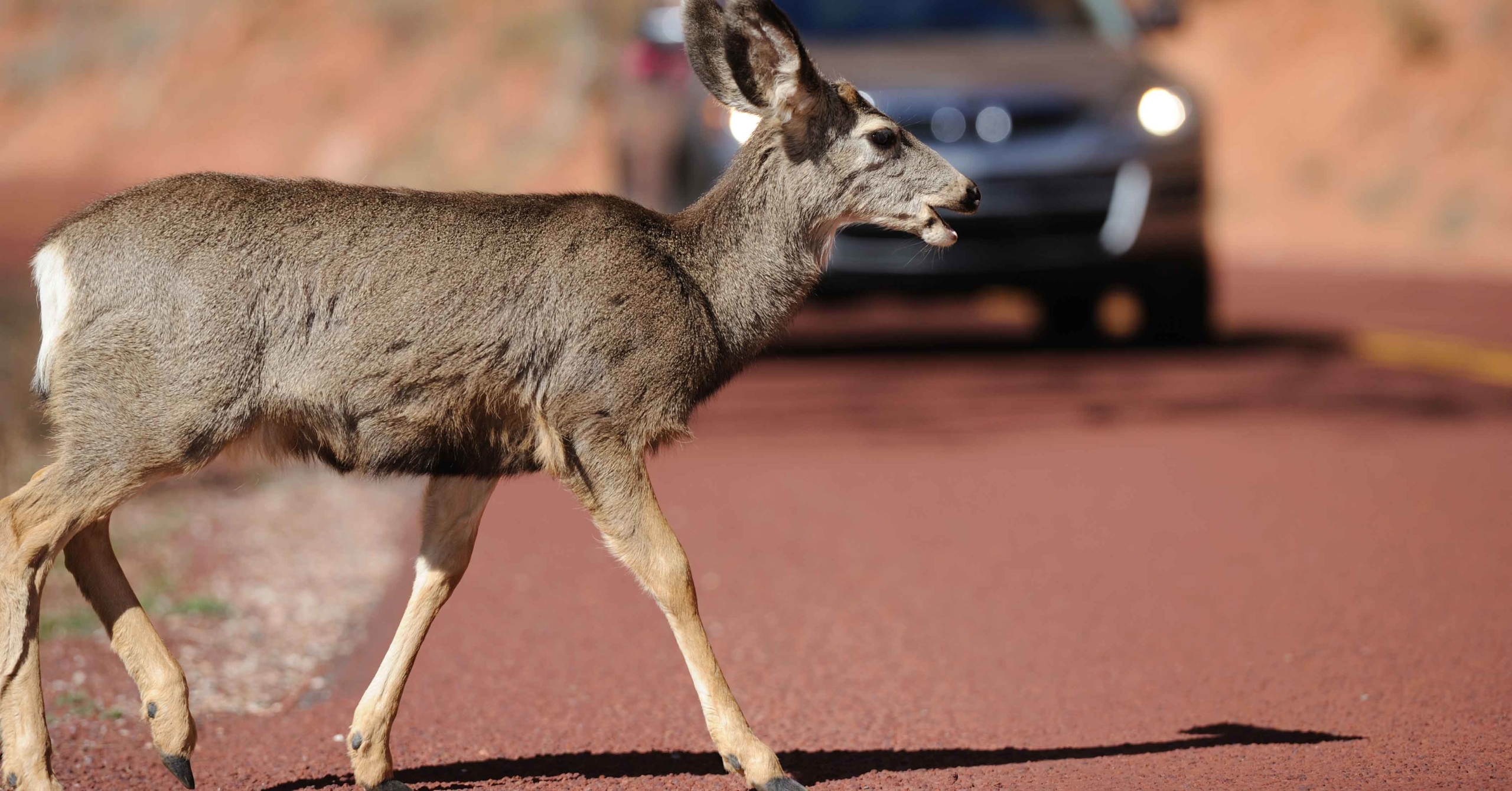Wondering which state has the highest incidence of deer accidents in the U.S.?
West Virginia, followed by Montana and Pennsylvania, according to a State Farm Insurance report. Deer collisions increase from October through December, which includes elk and moose.
Car crashes caused by deer accidents account for up to about 200 fatalities per year and 10,000 injuries, according to West Bend Insurance Divisions.
Beware of bloodborne pathogens in deer accidents
Deer carry brucellosis — a bacteria also found in unpasteurized milk and dairy products. If infected with the bacteria, symptoms include fever, fatigue, muscle and joint pain, according to the CDC.
As a side note, big game hunters are more at risk in coming in contact with brucellosis, than a driver who hits a deer. Either way, a six-week course of antibiotics is usually prescribed with brucellosis infections.
Depending on vehicle type, speed at the time of impact, and the type of animal that’s hit, it can look like a “horror film” from all the blood and entrails, said Paramedic Dennis Cole, from Norwich, Connecticut, as he recalled one scene involving a sedan colliding with a horse. “The whole family was traumatized,” he said.
When animal fluids enter the vehicle and the occupant becomes trapped after a deer accident, paramedics must have adequate supply of PPE, he said.
“If vehicle extrication is required and the vehicle is contaminated, a barrier such as a medical gown in addition to standard PPE would be prudent,” Cole said.
Take extra precautions with animal fluids, especially if it’s unclear what species of animal was struck. “All foreign substances from animal strikes should be treated with the same precautions as human body fluids which require standard precautions,” he added.
Try to identify the animal the driver struck, Cole suggests. When you contact the physician, that information will help them determine a proper course of treatment.
“Pathogens vary between animals and even in different regions, which can include parasites, viruses, and bacteria that generally are not found in the human population,” Cole said.
When drivers hit deer, Cole said patient injuries are not too serious, typically. It depends on animal size and speed during impact.
“Majority of injuries will be minor such as from airbag deployment, shattered glass, or objects in the passenger compartment becoming projectiles,” he said.
Driver diligence is important
South Dakota covers roughly 75,885 square miles, with a population of about 884,659. And about 50% (449,416) of the state’s population lives in rural areas, according to the Rural Health Information Hub.
Eric Van Dusen, president of South Dakota EMS Association in Sioux Falls, said his EMS crews are called to a significant number of incidents involving deer because of the rural topography, which is nearly 75% of the state.
His team does community outreach to help residents steer clear of deer.
“First, we try to teach drivers that you never swerve to miss a deer, as in most instances you end up rolling the vehicle and end up worse off than braking and possibly hitting the deer,” Van Dusen said. “We have had people in South Dakota die from swerving and rolling the vehicle while the deer lived as they missed it.”
If an ambulance operator hits a deer, Van Dusen said the damage is usually minimal.
“Many ambulances have a guard installed on the front of them to assist in minimizing the damage from impact in high areas of incidents,” he added.
Still, ambulance operators must remain vigilant to avoid deer accidents, Van Dusen said.
“If you swerve to miss an animal, you run the risk of rolling and, in turn, increasing the risk of the patient and crew in the back,” Van Dusen said.
Night driving tips
Mike Thomas, MHA, FACPE, CPSO, CACO, CAPO, EMT-B, MHP, director of safety and government relations with Jan-Care Ambulance/GEMS in Beckley, West Virginia, said they crackdown on ambulance operators speeding to help prevent negative outcomes involving wildlife.
“Jan-Care Ambulance prohibits speeding, and that is one measure to mitigate the chances of striking a deer or mitigate damages,” Thomas said.
Keep your eyes peeled for deer at night. Deer are easier to see at night since their eyes light up like little flashlights.
“At night, you can typically spot their eyes if they are close in proximity, and then you can safely begin to slow down, and let the deer navigate around you,” Thomas said.
Thomas also mentioned that states with heavy snowfall may see more deer during the cold weather months ahead.
“Deer sometimes will eat deicing road salt, so snowy weather may increase the chances that deer will be near the road,” he added.
Community safety tips you can share
According to State Farm, the following best practices can help you drive more safely in areas where deer and other wildlife are present:
- Maintain awareness and watch for deer herds.
- Use high beams on dark roads.
- Do not swerve if it appears inevitable you will hit a large animal.
- Reduce speed and honk horn if it’s safe to avoid a collision.
- Always buckle your seatbelt.

